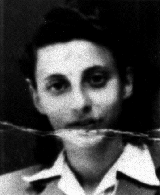In honor of the Holocaust victims and survivors - 70 years after
In 2003 my mother and I traveled to Washington D.C. to visit my mother's friend. Because her friend was going to work all day, we decided to visit the numerous museums that this federal district had to offer. The first museum we went to was the United States Holocaust Memorial Museum.
I must say that this place is so beautiful... not only because of the minimalist architecture of the building itself , it imitate the look of a concentration camp, but because each room or sector of the museum is so successful in making us imagine that we are in a nazi concentration camps. I know it will never be that way, there is no way to compare being there and being in a museum room but there are tons of images, sounds and videos along with material things that makes you feel that way.
I believe that the things on that museum exude (so to speak) the pain, loneliness and fear of the people who died in those concentration camps. It's a solemn place.
We walked through rooms that exposed documents, letters, and newspapers.There is also a place to remember the people who fought for them and tried to saved them. Other rooms showed videos of the German army, of the Jewish people, the camps, the dead, the children, and all the horror. If you go there you will also get a chance to see the actual uniforms that the Jews and the nazis wore. Personal belongings taken from the Jews are also on display like: shoes, luggage, clothing, toys and more. Other rooms imitated the barracks where the women and men used to sleep. We can see the pictures of them sleeping there and how crowded those places were. The exhibits are impeccable, they not only offer information but they affect you.
One
of the exhibits that made me emotional (again) was a long hallway between
3 floors with very high ceiling that is covered with pictures, it is called “The
Tower of Faces” this tower has 1,500 photographs hanging on its walls. This is
the collection of Yaffa Sonenson Eliach, a survivor who recollected
pictures of where she once lived and its inhabitants before the
holocaust; Ejszyszki.
You can
see how normal and happy was this community before the nazis arrived and
destroyed their lives. This exhibit is a way to give back to them all their
memories and make them feel like the community survived despite everything that
happened.
This
was my favorite place because after all the darkness and sadness of the museum,
comes the light and the life and the love that this picture evokes. You really
feel at home and you try to see the smile on their faces to feel better after
all you have seen before.
Before entering the exhibits, you will learn about tragic personal stories of people who were on those camps thanks to an identification card that is given to you. I got the identification card of Alice Lok Cahana (artist) and by coincidence we share the same birthday. So that was very special to me. If you plan to visit this place, remember that you can spent hours and hours in there because there are so many things to see, read and hear. It's an amazing place to learn about history.
This was my little tribute for all the people who died in the hands of the Nazis, by a bullet, by sickness, by suicide, by hunger or a broken heart at the many concentration camps across Europe.
This was my little tribute for all the people who died in the hands of the Nazis, by a bullet, by sickness, by suicide, by hunger or a broken heart at the many concentration camps across Europe.
ALICE Lok BORN: FEBRUARY 7, 1929
BUDAPEST, HUNGARY
Alice grew up in a Jewish family in Sarvar, Hungary, near the Austrian border. She had two younger brothers and an older sister. Her father worked for the family's carpet weaving and import/export business and was often away, traveling to their Budapest office. Alice's grandfather was a community leader and president of one of Sarvar's synagogues.
1933-39: I had a very special relationship with my grandfather. I admired him. People knew that they could always come to him for help of any kind. He often invited Jewish orphans to our home for meals. Every Sabbath our home was open to guests who came to study holy texts together. I loved to listen to the wonderful stories that Grandfather told, and he asked me to be his scribe and write those stories down.
1940-44: In April 1944, when I was 15 years old, the Germans invaded Sarvar and a ghetto was set up. Two months later, I was deported to Auschwitz with my mother, sister, and brothers. On arrival I was sent to a camp with children aged 15 and under. I searched all over for my sister Edith, and when I located her I sent a message. Miraculously, Edith switched places with someone in my camp. Every Friday night, the Sabbath, we'd pray where we could assemble secretly--the latrine. Other children joined us for these prayers.
Two days after liberation, Alice's sister was taken to a Red Cross Hospital. Alice never saw her again. After the war, Alice emigrated to the United States and became an artist.










No comments:
Post a Comment